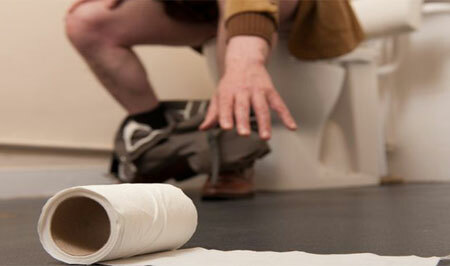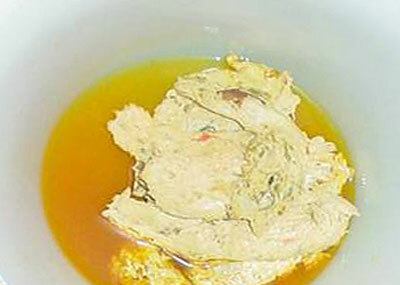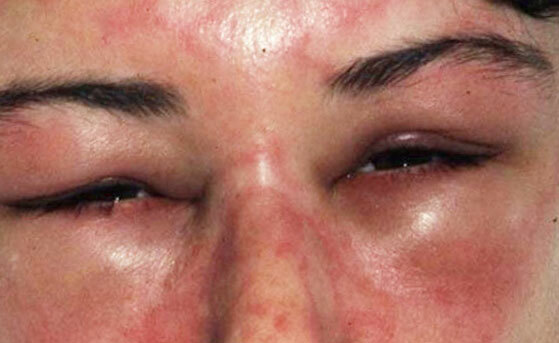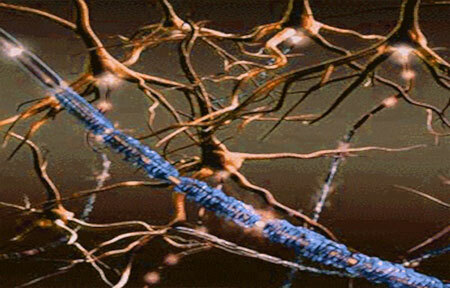Blood, feces and urine are the main components of the initial diagnosis of any diseases. It is their indicators that indicate the direction of the diagnostic search. Determine the "root" of pathological processes.
Other diagnostic techniques - bacterial analysis, morphological studies, instrumental methods, etc., are aimed at determining the genesis of the disease, its location and severity, helping the physician to choose an effective treatment plan.
What, for example, says light feces in adults and children, what changes in the body indicates?
Contents of
- 1 Causes of light colored stool in adults
- 1.1 What should attract attention?
- 2 Diseases provoking the appearance of a light feces
- 3 Gray feces - when is a wine of illness possible?
- 4 Causes of light feces in a child
- 5 What should I do when I go to the doctor?
Causes of light colored stool in adults

The processes of changing the color spectrum of human feces always indicate intestinal problems. Examination of stool gives the specialists the opportunity to detect any pathology of the digestive tract.
Light feces in an adult can be manifested due to dietary inclinations and excessive consumption:
- dishes from potatoes and rice;
- sweets, juices and confectionery products based on starch and tropical fruit juice tapioca;
- of dairy and fermented milk products;
- milk cream, fatty sour cream and oil
- alcoholic drinks of questionable quality.
Provision of clarification of feces may:
- medicinal calcium containing medications;
- preparations from acids of dependent diseases( antacids);
- remedies for diarrhea;
- X-ray contrast agent - barium sulphate;
- antibiotics and drugs used in the treatment of heterogeneous diseases.
Usually, the effect of such provocative factors does not cause significant anxiety and changes in well-being. After 5-6 days, correcting the diet and eliminating the provocative factors, the stool normalizes and acquires the usual color of
. What should attract attention?
If the feces become light and dark urine appears, signs of intoxication, fever or fever, the belly inflates from the accumulation of gases and there is a sharp weight loss - this can not be ignored, since this symptomatology indicates serious problems in the digestive organs.
In particular - the development of pathological processes in the liver, infectious intestinal lesions or functional disorders of the gallbladder.
Diseases provoking the appearance of a light feces

Diseases causing clarification of stool
A number of diseases cause pathological disorders in the digestive system due to which fecal decoloration occurs. These include:
- Diffusive inflammatory diseases of the liver, due to infection with specific viruses of various hepatitis genotypes.
- Bacterial and viral defeat of the gallbladder( cholecystitis), which causes bile duct disease.
- Obstruction of pancreatic duct openings in pancreatitis, capable of completely disrupting intrasecretory functions.
- Fermentopathy - a violation or complete absence of enzyme production by the pancreas.
- Inflammatory processes of the whole digestive tract( Crohn's disease) and intestinal flu, which disrupt normal digestion.
- Malignant formations in the digestive tract.
All this is accompanied by unpleasant symptoms:
- The formation of suppurative foci and fistula in the intestine;
- Infringement of a thermoregulation of a body;
- Nausea and dizziness.
Sometimes, biliary stagnation causes abdominal pain and light feces.
1) The very light color of the stool can appear, as a result of completely innocuous reasons( excess milk and plant food), and with various pathological processes. Usually, these are liver and gallbladder problems.

Very light color of stool in adults, photo
Pathology is caused by a lack of bile secretion and insufficient separation of it due to the formation of stones in the intestine. Contribute to its formation - dysfunction of the digestive system and violations of the processes of natural cleansing of the intestine.
Very light feces accompanied by unpleasant odors, evidence of functional impairment due to the incompetence of the digestive system, complete digestion of fats and their absorption against the background of obstruction of the pancreatic ducts, malignant formations in the gallbladder or pancreas.
Alertness should be shown when the problem is periodic or permanent. The single manifestation is most likely related to the diet.
2) Light green feces of , apart from a green vegetable diet or vegetarian food, are promoted by stagnant processes in the small intestine caused by neoplasms or ulcerative foci in its cavity.
Acute inflammatory processes in the intestine lead to mass death and accumulation in its lumen of white blood cells, which acquire a light green color and the smell of rot.
Pathological light green color of faeces is acquired with microbial imbalance in the colon or with general infectious intoxication of the gastrointestinal tract( dysbacteriosis and dysentery).
Frequent manifestation of such symptoms requires a serious examination to avoid further complications.
3) Light yellow stool .The cause of the pathology lies in the pathological functional disorders in the pancreas. This is expressed in the lack of secretion of digestive enzymes, designed to ensure the uninterrupted absorption and digestion of fats.
General digestion processes are disrupted, resulting in a change in the color of normal light brown feces to a light yellow color.
The pathologies of the gallbladder and liver disease, also lead to a change in the color of the feces. Failures in the processes of bile secretion cause bilirubin to enter the GIT system in a natural, not oxidized form, which gives the feces a light yellow color.
This is accompanied by a more intense color of urine and strong gassing in the intestines, caused by fermentation of its contents.
One of the reasons for changing the usual color is the excess milk ration. This phenomenon can occur in children who are breastfeeding. Light yellow feces in a child after a year, often appears after consuming milk porridge and dry mixtures on milk.
This is not a pathology, but it is a normal physiological manifestation of the still unsound children's GIT system.
Gray feces - when is it possible to fault the disease?

Gray feces, photo
With normal light brown feces, its color is caused by the processed bile pigment, but its strong discoloration to a light gray color indicates a lack of bile in the intestine.
Violation of her admission to the body is evidence of pathological changes caused by:
- Inflammatory narrowing of the bile ducts.
- Obstruction of ducts with tumor formations.
- Inflammatory processes in the gallbladder( with cholecystitis).
- Inflammatory foci in the pancreas( mainly with pancreatitis).
- Inflammatory processes affecting the whole gastrointestinal tract( with Crohn's disease).
- Tumor neoplasm in the liver, gallbladder, or pancreas.
Provision of light gray feces may result in:
- addiction to foods high in fat;
- application of X-ray contrast preparations of barium;
- non-steroidal anti-inflammatory drugs and antibiotics;
- anticoagulants and antimycotics
- are some oral contraceptives.
In pregnant women, this color of stool can be a consequence of allergic reactions.
Causes of light feces in a child

In most cases, the appearance of discolored feces in children is due to a not fully formed digestive system. This fact is considered a physiological property of the child's organism and should not cause concern.
In other cases, the provocative factor may serve:
- improper diet of the child - fatty milk and sour-milk food;
- excess of sweets;
- long-term antibiotic treatment with antipyretic and anti-inflammatory drugs;
- quite often color changes occur and during the eruption of the first teeth.
Having eliminated all the causative factors, the bowel movement in the child returns to normal. The little man is unable to explain to his parents what is bothering him and where it hurts.
It is necessary to closely monitor the natural waste of the child and pay attention to possible changes in the color of urine. With internal problems, urine usually becomes dark.
In children one year old and older , light feces may appear due to:
1) Rotavirus gastroenteritis. Change in color of faeces is accompanied by diarrhea, general deterioration of health, symptoms of intoxication and temperature.
In the following days, the color of the stool becomes light yellow, on day 2-3 - pale gray. There are respiratory symptoms, signs of polyarthritis and enlarged lymph nodes.
2) Dysbacteriosis. The provoking factor is antibiotics that cause a bacterial imbalance in the gastrointestinal tract in the direction of an increase in pathogenic microorganisms.
The stool of a child manifests itself in a series of diarrhea and constipation, with the inclusion of mucus and not overcooked food fragments. Possible - apathy to food, a bad dream, a decrease in weight.
3) Focal inflammation of the liver ( hepatitis).It is possible to suspect the disease by the color of urine, it resembles a dark beer. Among the symptoms noted:
- light feces, abdominal pain( in its upper part) and bloating;
- yellowing of the skin and outer shell of the eye;
- apathy to food and high temperature;
- signs of intoxication.
The clinical picture can manifest itself in an erased form, when severe fatigue and pain in the hypochondrium are the only symptomatology.
Timely unidentified disease becomes chronic, increasing the risk of developing cirrhosis.
4) Pathology of the digestive tract - biliary dyskinesia, bending and inflammatory pathologies of the gallbladder and pancreas. Are manifested, as a consequence of ENT infections, scarlet fever and flu, gastritis, as a reaction to helminthic invasion or the consequence of an improper diet.
As a complication of inflammatory processes of cholecystitis, deformation of the gallbladder( bend) is formed, causing congestion and bile stasis, which contributes to the disturbance of metabolic processes. Complicated by the development of diabetes, a decrease in vascular and muscle tone, a decrease in visual functions.
At the slightest suspicion of internal problems, you should immediately contact a specialist. It is important to eliminate the cause in time and prevent the development of pathology.
What should I do when I go to the doctor?
If the feces change over time to a light color and obvious symptoms of impaired well-being, it is necessary to report to the doctor for an advisory reception. Upon the appointment of a doctor, take the appropriate tests and undergo the necessary diagnostic examination.
Follow the dynamics of the development of pathological processes - if the manifestation of light feces in adults and children, for a long time, is accompanied by signs of internal diseases - the need for urgent treatment is obvious.



